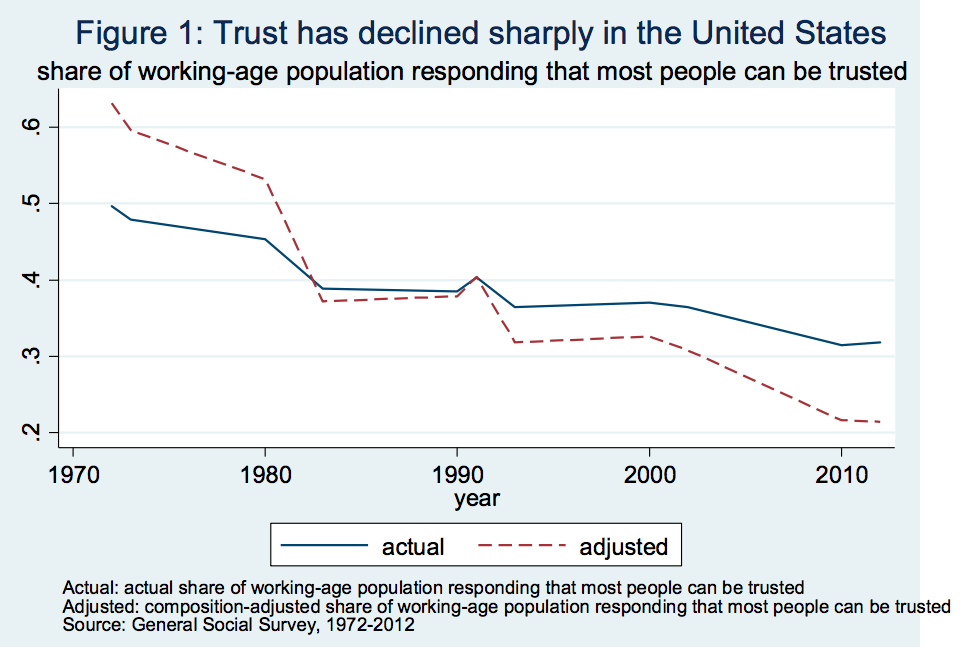Part II of III (Continued from post #6)
In
Bowling Alone, social capital is defined functionally: when social groups exhibit “good behaviors,” social capital is present. This functional definition unsatisfactory and that is is can been seen in Putnam’s discussions of types of social capital. Putnam distinguishes between bridging social capital, which builds links between groups and bonding social capital, which solidifies links within groups. Notice that this is not a natural dichotomy, for one would expect various forms of social networks to concurrently do both. To wit, consider national identity. Identification with one’s country, and the attendant loyalties it induces towards other citizens, can act to bridge different ethnic groups within a country and bond citizens to foment hostility to foreigners. Does national identity, then, increase or decrease a country’s stock of social capital? Putnam's theory of social capital, as expressed in Bowling Alone, is quiescently vague/ambiguous in response to that question. (Putnam is not alone among social capital theorists; the discipline's thought routinely deviates from the use of constructor definitions of individual and societal comportment.)
This vagueness contrasts with economics' approach to studying social interactions, one of which is game theory. For example, the basic ideas behind the Folk theorem come down to the recognition that in repeated interactions, cooperation is possible; Binmore’s description is particularly apt for this context.
... all interesting outcomes in the cooperative region of a one-shot game are also available as equilibria in an indefinitely repeated version of the game. (p. 265) ... for indefinitely repeated games, the Folk theorem, tells us that we do not need to rely on anything but the enlightened self-interest of sufficiently forward-looking players to maintain the full panoply of cooperative possibilities. (p. 293)
The basic intuition underlying the Folk theorem is that if individuals are punished in the future for presently acting uncollaboratively, then cooperation can be sustained over time. In "Social Norms and Community Enforcement," Kandori shows how this idea can be generalized to approximate a social norm whereof each group member punishes noncooperative behavior, even when he has not directly suffered from it. This shows how the idea of social sanctions can be formalized.
From the perspective of
Bowling Alone, the Folk theorem has two implications. First, it illustrates that it is possible to supplement the text's casual theorizing of the book with a more rigorous and coherent alternative. Second, it suggests that in equating social capital with reciprocity and trust, Putnam conflates disparate concepts. The cooperative behavior which can occur in repeated games is consistent with the narrowest form of one's economic decision making process in that cooperative behavior derives from self-interest defined with respect to standard notions of utility. In this respect, one can think of the Folk theorem as describing the emergence of a form of generalized reciprocity among selfish agents.
Etiology:
Bowling Alone lacks a well-delineated theory about the relationship between the underlying social norms which embody social capital, and the various activities which the book alleges signal its presence or absence. This omission reflects Putnam’s lack of attention to the nature of individual decision-making. An understanding of purposeful behaviors such as voting or the decision to join the Elks, requires an explicit formulation of the constraints, preferences, and beliefs that determine an individual’s choice. This choice-based perspective can then be used to ask how individuals are influenced by the choices of others or by the past behaviors of a given individual. Without going through this type of analytical exercise, one cannot develop a satisfactory causal theory of the relationship between social capital and observed behavioral patterns.


